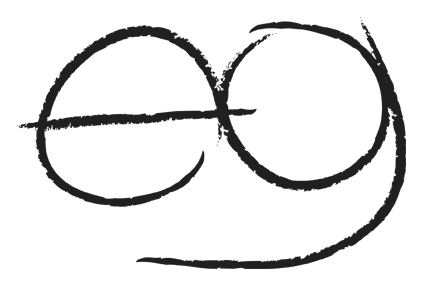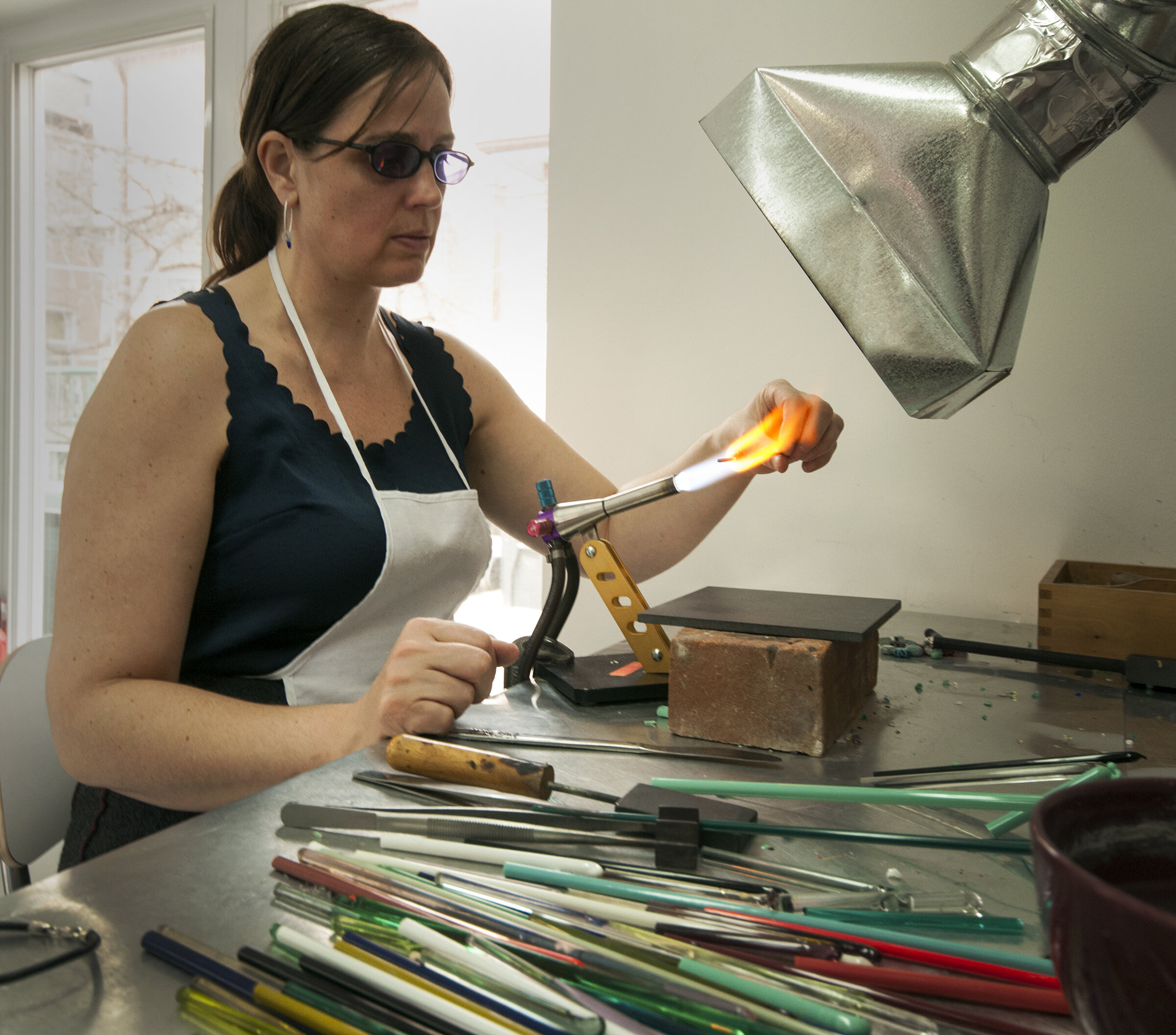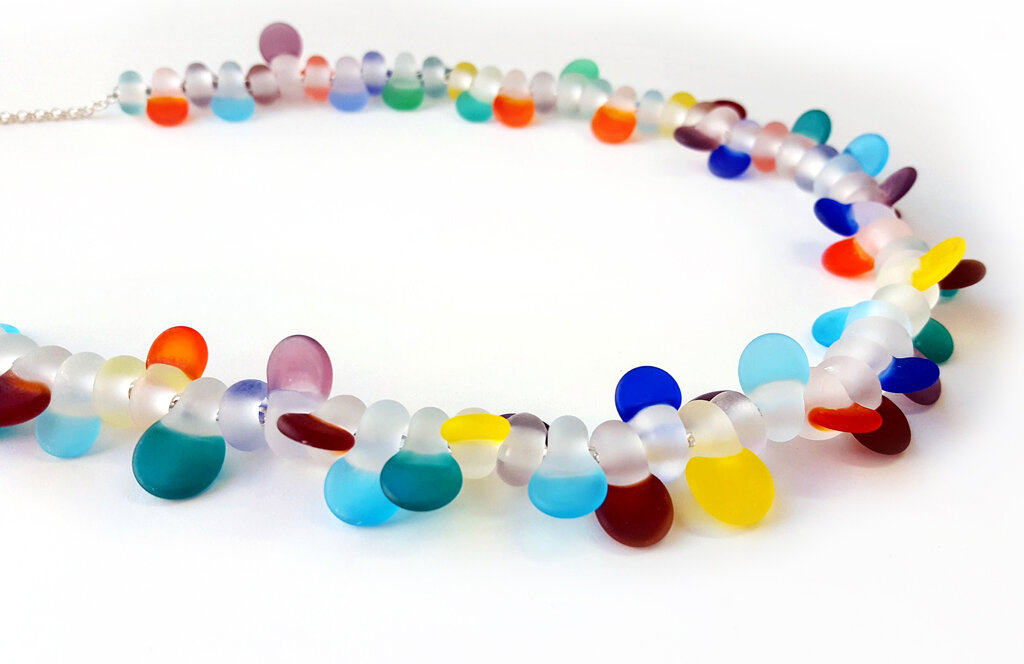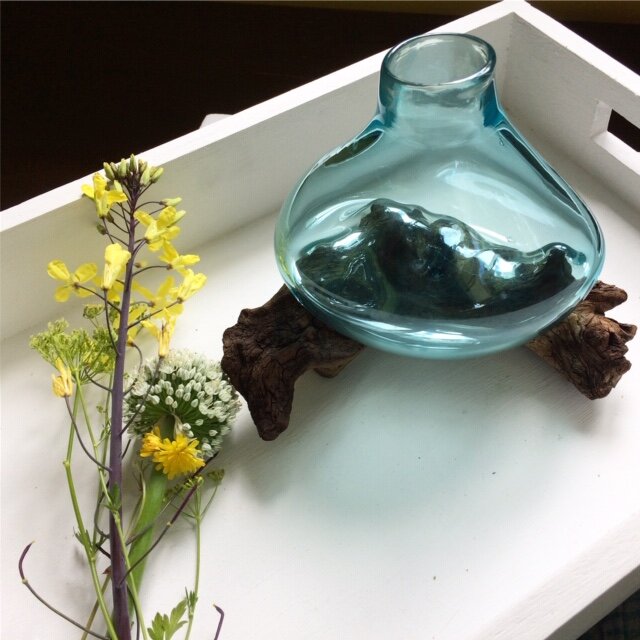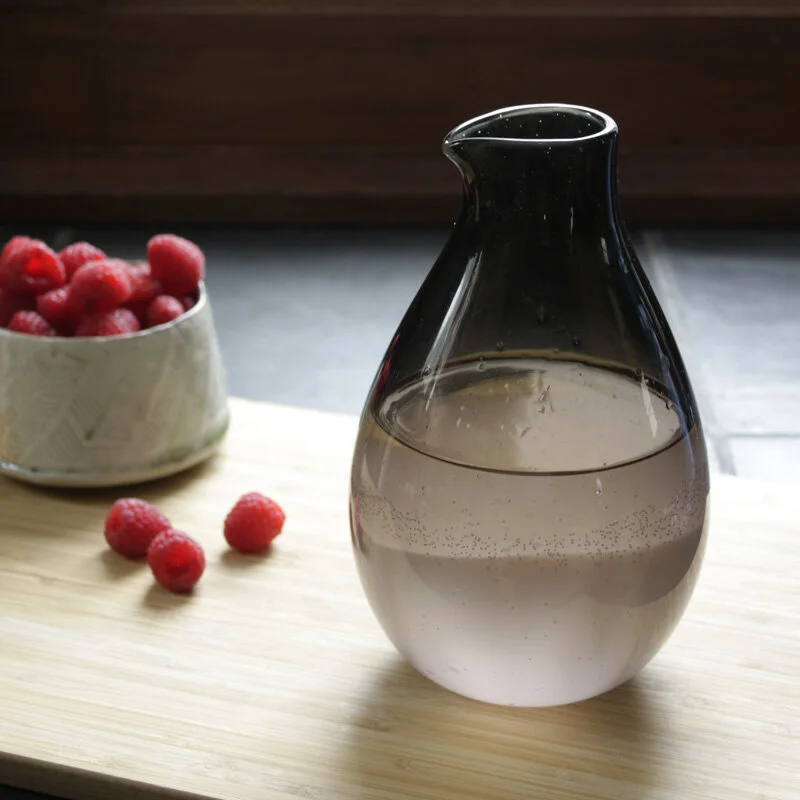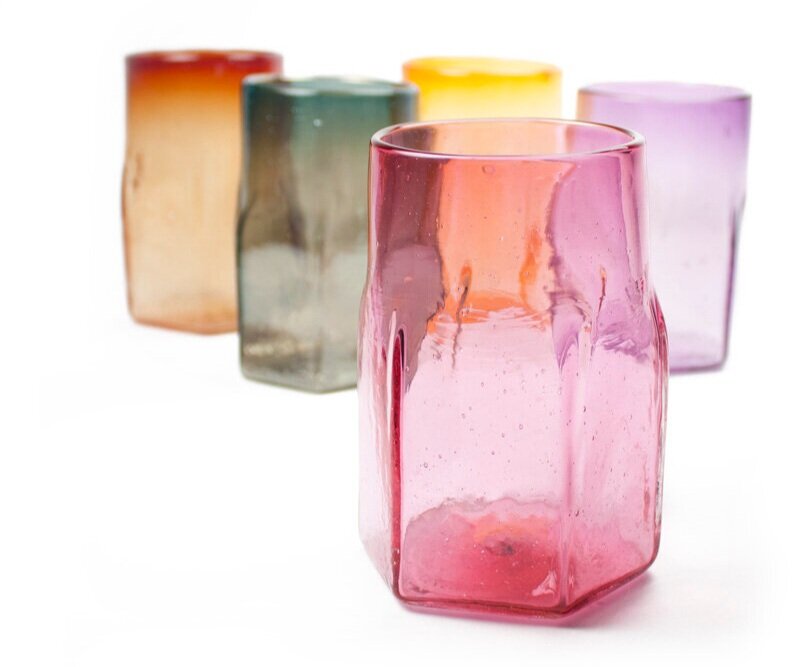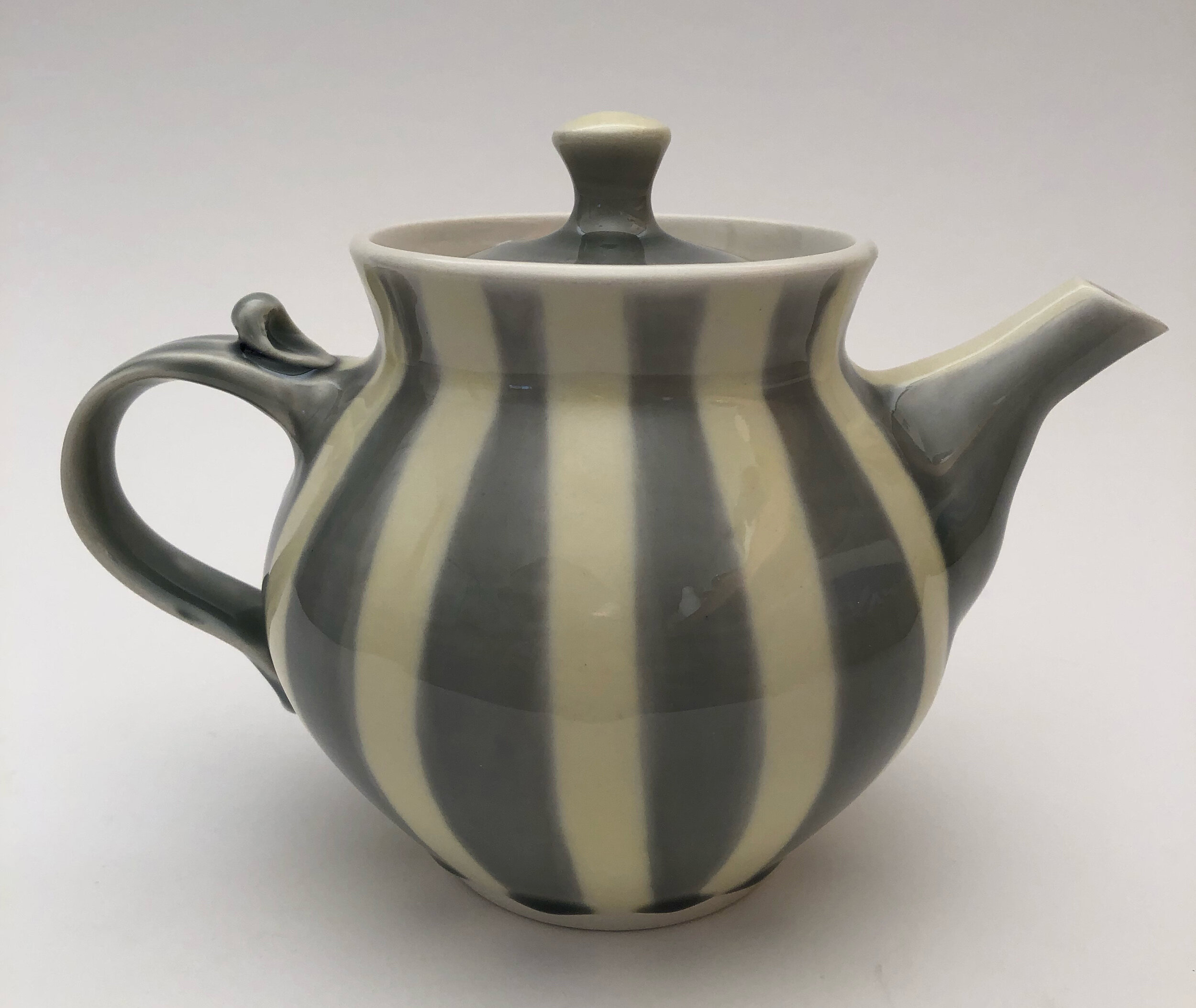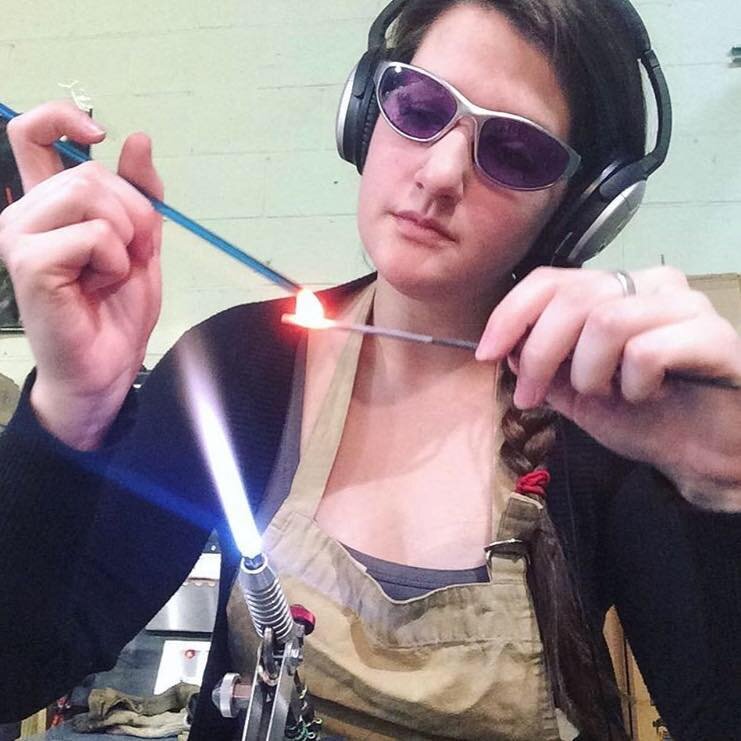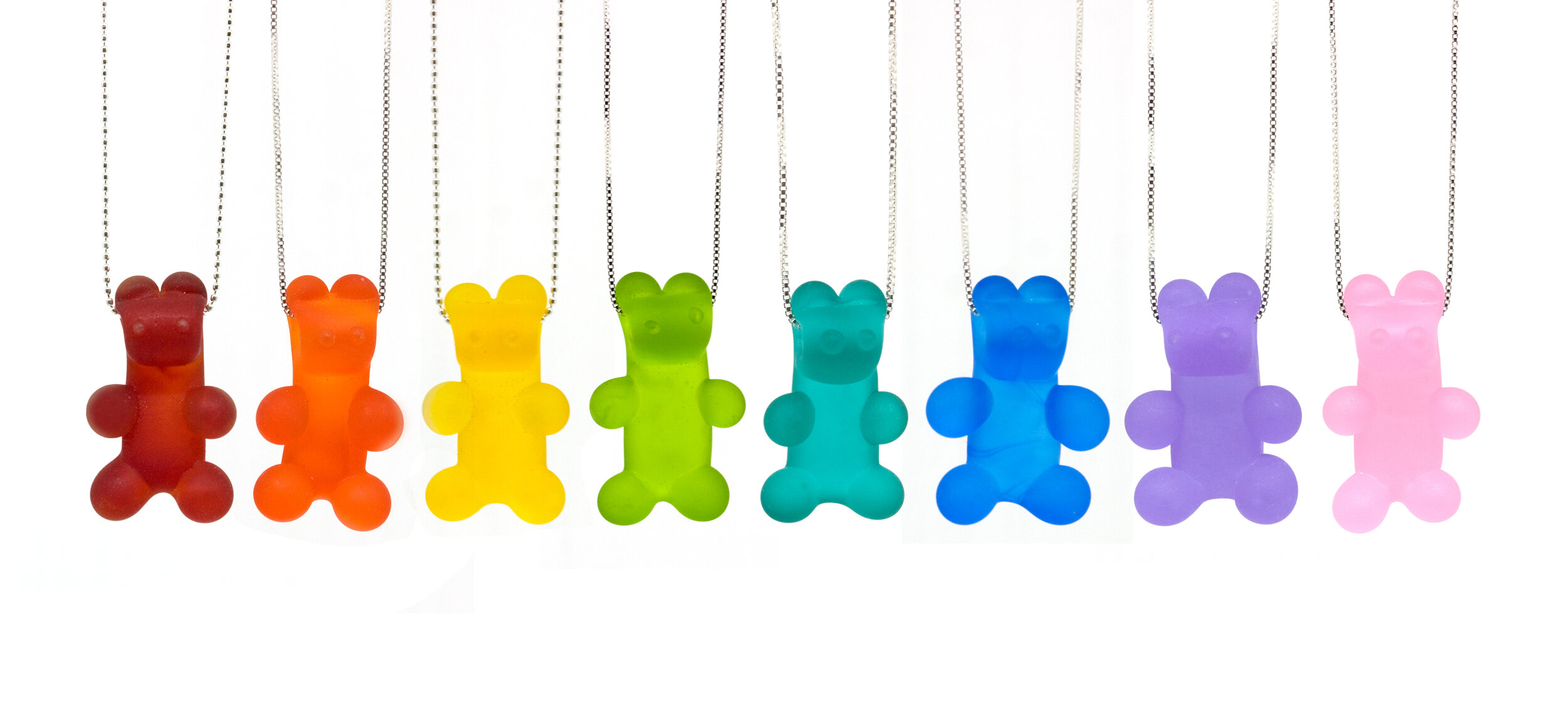I am delighted to introduce you to the lovely glass jewellery artist Nadia Tasci. I met Nadia several years ago at the One of a Kind show and not only is she incredibly talented but she is one of the sweetest people you will ever meet. The glass community is pretty small and the glass beadmaking community, especially in Ontario, is even smaller and I’m so thrilled to be part of it with her.
What does handmade mean to you?
For me handmade is a human connection with material matter. A craftsperson brings a unique set of expertise to a material. This can be functional or non functional.
How long have your been working in your chosen medium? Did you attend college or university to learn your craft?
I have been flameworking and silver fabricating jewellery for quite some time now. I went to OCADU in the late 90s and studied Drawing and Painting. In 2000/2001, I attended Sheridan College’s Craft and Design Glass Blowing Program but decided after the first year that I was done with traditional schooling. At the time I needed to have freedom and a more direct learning experience, so I attended Sterling Quest School of Jewellery Design in San Miguel De Allende, Mexico. I lived and studied in Mexico for an extended period of time and completed the certificate program. It was the best experience I ever had as a student. I felt liberated and for the first time in my life was comfortable learning. I enjoyed the learning process of pursuing any design and technique with the support of the instructor to get you through the process. Over the last 10 years I have taken workshops with several internationally recognized glass flameworking artists. I’ve also learned a lot on my own from working in my medium for almost 20 years.
Tell me about your process. What would surprise people about your process? Is there a part of your process that you don't enjoy?
I always express my current aesthetic interest in my glass work. Over the years it has become very clear to me that my craft practice is directly influenced by the physical environment. I have traveled extensively over the years and I really pay attention to the environments that I visit. I spend time observing and connecting with new places. When I return into the studio from travel my visual experiences pour through me and I work through them until I’ve expressed my interpretation through glass.
My glass studio practice can be really challenging sometimes. I feel compelled to come up with new work pretty much every year and that can be really difficult. Sometimes I get really frustrated and nothing comes out of the studio for weeks or sometimes months. But eventually it all comes together and I get into a groove.
What about your chosen medium(s) made you pursue your craft?
Anytime anyone asks me what made me choose glass it’s very clear to me.
While attending OCADU I was invited to a hot shop that was having a party. I had never seen glass blowing before so I was very curious. The first time I saw molten hot glass being formed I fell in love with the material. I watched the glass blowers work for hours that night and I decided right there and then that glass was going to be my life. I never looked back.
If you could work in any other medium, what would it be?
I think if I could work with another medium it would be clay. Whenever I look at sculptural forms I am always drawn to works done in clay. I admire experimental glazing techniques and unusual forms that are made from clay work. I think I could really get into that process.
What is the most important thing you want people to know about your work?
Design is a big part of what I do in my studio practice. It’s important for people to understand that as craftspeople we not only make things by hand with a high level of expertise but we also design and create the artistic concept of the object.
What is your greatest accomplishment, or the thing you are most proud of achieving with your art?
My biggest accomplishment is that I make a living from my contemporary glass jewellery. I have had to work very hard and be dedicated to finding my way to make that happen. I have been lucky enough to meet amazing craft people and artists early in my career that showed me it was possible.
I have a family now and I am a mother of two small children. This adds to the complexity of life. It takes even more discipline and focus to have a family and a studio practice. I would never trade it for anything else.
What has been your biggest challenge while pursuing your art?
My biggest challenge has been to find my own identity in flameworked glass. It’s taken me years to develop my artistic style. For several years I had to support my art through other part time jobs. I always wished I could have put myself into my art form full time from the beginning. When I started to work full time in the studio my artistic identity developed consistently. In the last few years I’ve really started to like my work as strange as that sounds. My next challenge and hope for the future is to be able to make glass work that is less commercially viable.
Has the confusion surrounding the term "handmade" affected your business/practice? What are your thoughts on re-sellers?
There is constant confusion surrounding handmade. The general public is usually very surprised that I make my glass pieces. People for the most part are very disconnected from handmade. They can get anything at their finger tips and for next to nothing because of cheap manufacturing done over seas.
It’s up to us crafts people and artists to educate with kindness. We need more than ever to open those studio doors and share our practice with others. We need to celebrate what we do and communicate with people that we are makers and what that really means.
How do you (and how can we) educate consumers about what handmade actually means?
We need to take responsibility for educating consumers and we need to see more exhibitions globally that are directly advocating for makers. I am finding more and more that craft shows are bending the definition of what constitutes an artisan. I find it harder every year to make a profit at craft shows. I’ve pulled out of some major shows over the last few years because of this trend. I want to see more shows that have a craft focus and really celebrate and support makers. It’s a critical time for us and we need to work together to protect craft.
How has being an artist changed the way you shop?
I support other crafts people whenever I can. I also try to buy Canadian products whenever it is possible. My dollar has a lot of power.
Who are your favourite makers?
My favourite makers are the nameless men and women of this beautiful planet that work with wood, clay, textiles, glass and other materials that bring such a high level of expertise and ancient traditional practices. Whenever I travel I seek out these makers. In India I visited the textile makers and in Guatemala I spent time learning traditional weaving. These people inspire me the most.
